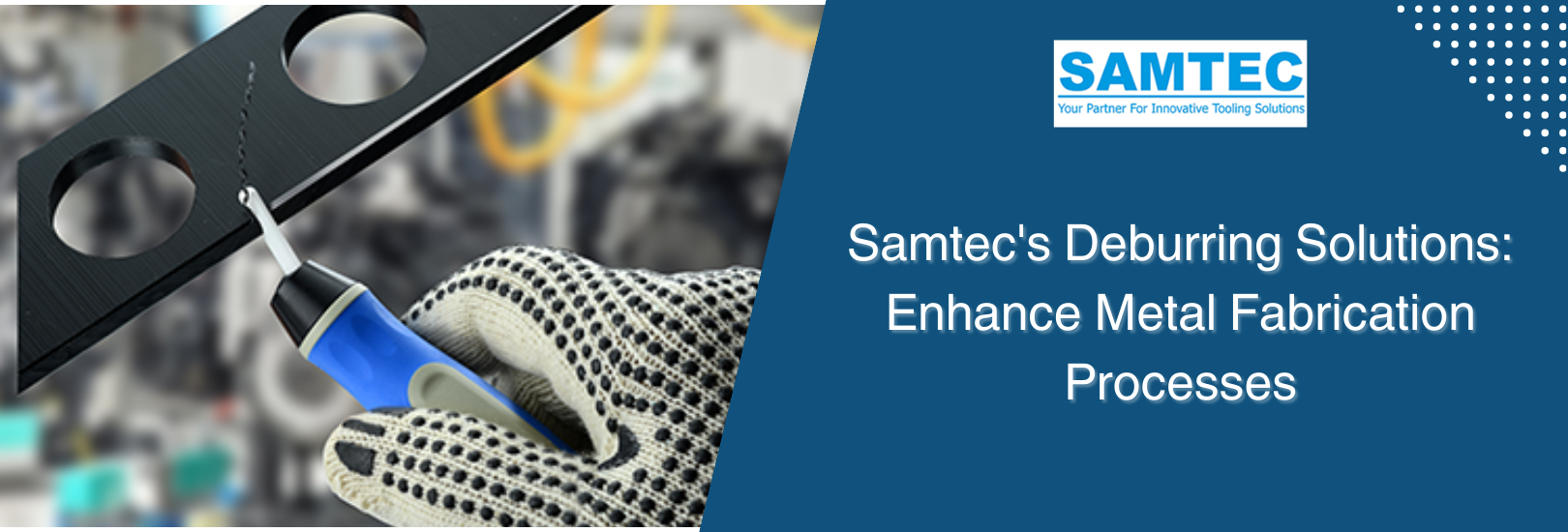
Deburring is a crucial process in metal and steel fabrication and manufacturing. Burrs occur during numerous machining processes such as folding, welding, casting, stamping, or shearing, and they can create a variety of problems, akin to a splinter in a piece of wood. Burrs are raised, sharp, or jagged pieces of material on a workpiece that affect the quality, longevity, and performance of the part.
These burrs can also make it difficult for the metal components to function properly, impacting their ability to withstand pressure, stress, or strain. The deburring technique removes sharp burrs and defects to provide a more visually appealing and safer result. Deburring prolongs the life and improves the appearance of metal workpieces while also making them easier to handle for operators by reducing friction between them and the equipment.
Why is Deburring Important?
Safety: Deburring metal parts is essential for safety. Sharp burrs left on metal components have the potential to harm workers handling them or consumers of the final product. Metal components that have been deburred are guaranteed safe to handle and operate.
Functionality: Burrs left on metal parts might impair their performance. Gears may jam or wear out more quickly if they have burrs on the edges. Metal parts that have been deburred will perform better and last longer since it guarantees that they work as designed.
Aesthetic Appeal: Deburring can improve the appearance of metal items by creating a smooth, polished finish that seems professional and high-quality.
Resistance to Corrosion: Burrs left on metal parts can trap moisture and other impurities, resulting in corrosion and rust over time. Metal components that have been deburred have less chance of corroding and last longer.
Efficiency: Deburring metal parts can also improve the production process’s efficiency. Metal burrs can slow down production and raise costs by causing delays or raising questions about quality control. Deburring prepares metal parts for the next stage of manufacture, reducing downtime and enhancing efficiency.
Types of Burrs :
Poisson Burr: Commonly seen at the entry point of a cutting tool, Poisson burrs form as a result of the force of a tool pushing into a material. An extended burr perpendicular to the feed direction is produced as a result.
Roll-Over Burr: Roll-over burrs are created when a chip is bent as the tool exits the cut. Rather than shearing off the section, it folds and forms a burr.
Cut-Off Burr: A cut-off burr forms in the process of parting off. When material falls off after being cut away from the main workpiece, a burr can be left behind at the point of disconnection..
Tear Burr: Tear Burrs form due to material deformation. During punching and side-milling, the material often shears off neatly; in these situations, however, it tears.
Deburring Processes
1. Manual Deburring: Manual deburring refers to deburring with the use of files, sanders, handheld manual deburring tools, brushes, and more. These methods can be quick and low-cost. However, manual deburring is very user-dependent, meaning that uniformity varies greatly throughout parts.
2. Mechanical Deburring: Among the mechanical techniques for deburring are barrel tumbling, waterjet, electrochemical, and specialised deburring equipment. While this may not be the most cost-effective option upfront, mechanical deburring methods offer more consistency unmatched by manual methods. Whether you choose to deburr by manually or with machinery, having the appropriate tool or tools for the job can help you turn an inefficient and expensive operation into a profitable one.
Samtec's Deburring Solutions
Samtec provides a complete portfolio of Hand and Machine Deburring tooling solutions to support a wide range of Deburring industry specific applications, components and materials. They offer hand deburring systems consisting of Heavy Duty 3.2mm Swivel blade, Light Duty 2.6mm Swivel blade, Countersinks, External Countersinks, Reversible Countersinks, Scrapers, Double Edge Cutting Ceramic tools, Sets and Kits, Specialty tools, and Specialty blades. Samtec also offers deburring solutions for Straight edge, Countersinks, Reversible Countersinks, Hole Deburring, Scrappers, Diamond files, Key way deburring, Slot deburring O rings, External countersinks, plastic deburring, etc.
For mass production setups, Samtec offers machine deburring solutions. Manual deburring is usually a time-consuming operation in mass production setups, especially for hard-to-reach areas like the back sides of holes. Samtec's products provide a better way to get rid of those troublesome burrs using mechanical hole-deburring tools to remove burrs on the front, back, or both sides of drilled holes in one pass.
Samtec can also develop custom deburring solutions to meet the unique requirements of their customers, ensuring that businesses can achieve precise and efficient deburring processes. With the right deburring equipment and processes in place, businesses can optimize their manufacturing operations and deliver high-quality products to their customers.
Copyright © 2025 Samtectools
Best viewed in IE 10+, Firefox 20+, Chrome , Safari5+, Opera12+